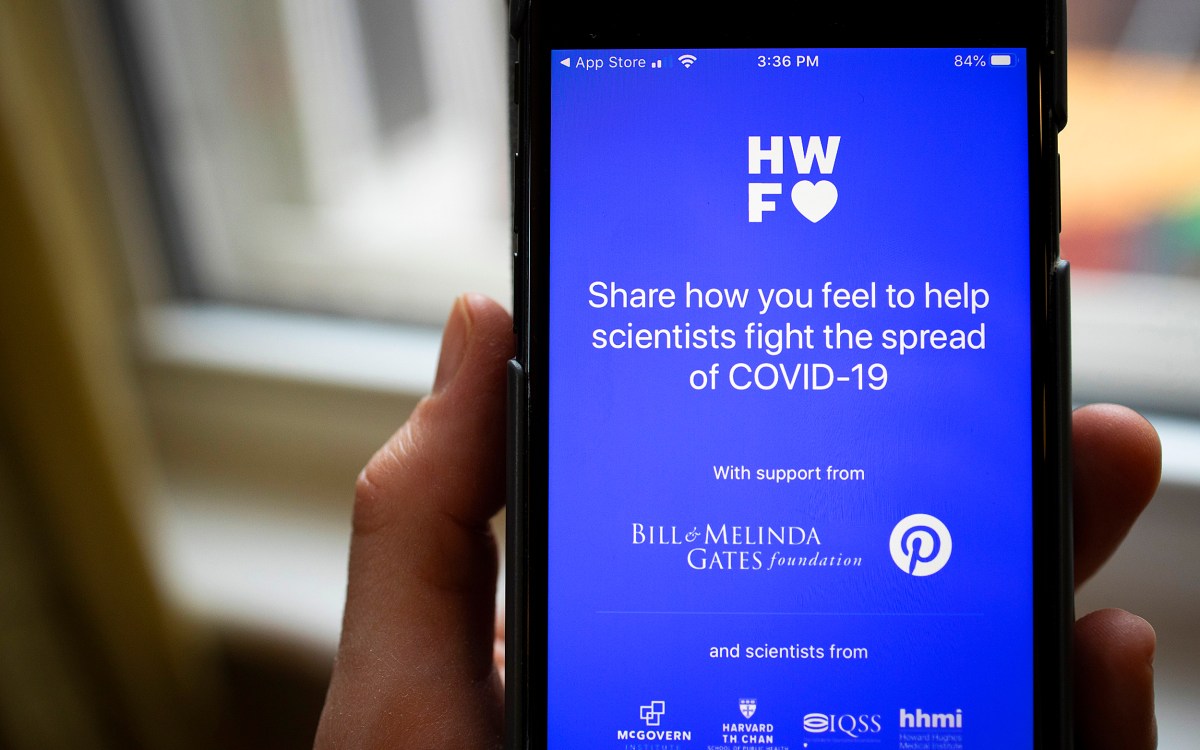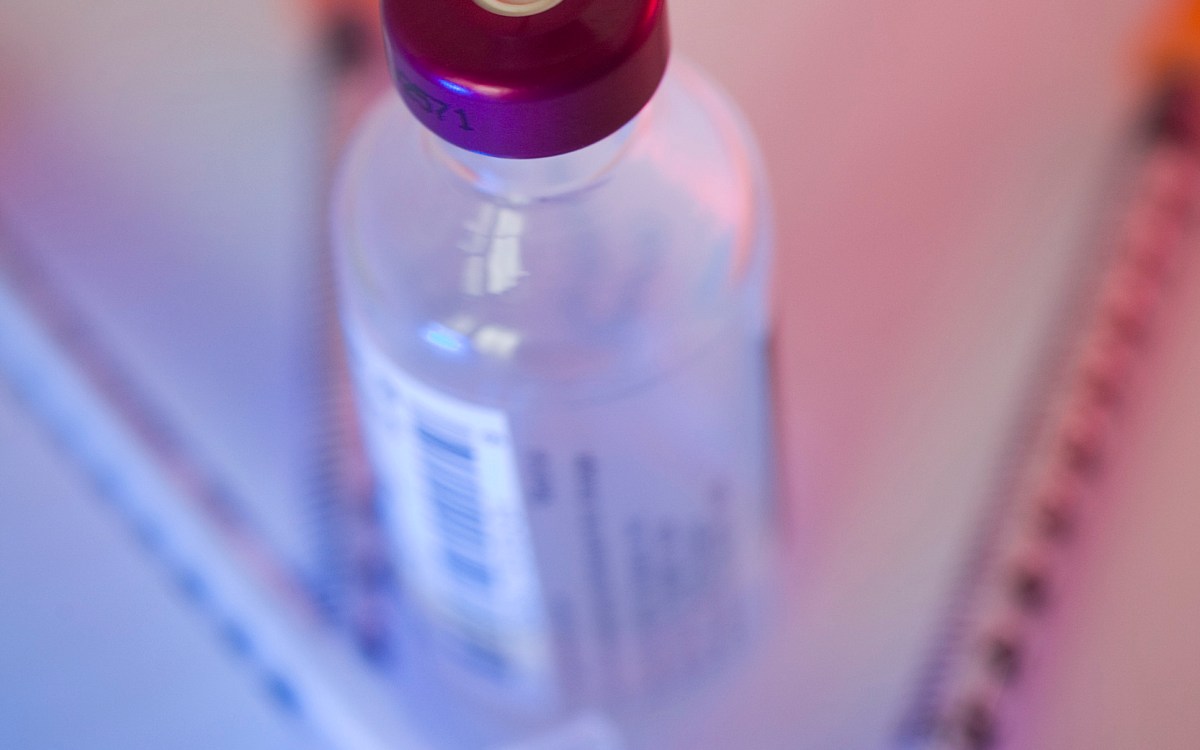
SARS-CoV-2 particles.
Photo courtesy of NIAID
Infection detection
‘Viral history’ tool VirScan offers new insights into antibody response to SARS-CoV-2
A tool designed to detect viral history in a drop of blood has gotten an upgrade in the age of COVID-19.
VirScan, a technology that can determine which of more than 1,000 different viruses have infected a person, can now also detect evidence of infection from coronaviruses, including SARS-CoV-2.
The insights could inform the development of COVID-19 treatments, vaccines, and blood-based diagnostic tests.
In a paper published online Sept. 29 in Science, investigators from Harvard Medical School (HMS) and Brigham and Women’s Hospital offer a treasure trove of details about the antibody response to SARS-CoV-2 and how this response may differ in individuals who go on to have a more severe case of COVID-19.
“This may be the deepest serological analysis of any virus in terms of resolution,” said corresponding author Stephen Elledge, the Gregor Mendel Professor of Genetics in the Blavatnik Institute at HMS and Brigham and Women’s.
“We now understand much, much more about the antibodies generated in response to SARS-CoV-2 and how frequently they are made,” he said. “The next question is, what do those antibodies do? We need to identify which antibodies have an inhibitory capacity or which, if any, may promote the virus and actually help it enter into immune cells.”
Analyzing epitopes
In their analysis, Elledge and colleagues looked in depth at antibody responses to SARS-CoV-2 by using VirScan to analyze blood samples from 232 COVID-19 patients and 190 pre-COVID-19 era controls.
The team identified 800 sites of the virus that the immune system can recognize, known as epitopes.
Not all epitopes are created equal; some may be recognized by neutralizing antibodies, which can elicit a response that eliminates the infection. However, if the body creates antibodies against other epitopes, it may launch a less effective response, giving the virus an advantage. In some cases, including the related coronavirus that causes SARS, viruses may even be able to benefit from the body’s antibody response, using antibodies to enter cells in a phenomenon known as antibody-dependent enhancement.
In the case of SARS-CoV-2, the team detected a range of antibody frequencies against various epitopes.
Many were public epitopes — regions recognized by the immune systems of large numbers of patients. One public epitope was recognized by 79 percent of COVID-19 patients.
Others are considered private and recognized by only a few or even one individual.
Ten epitopes were in regions essential for viral entry and are likely recognized by neutralizing antibodies.
Putting insights to work
The team used the most discriminatory epitopes to develop a rapid diagnostic test.
The team’s epitope findings may have important implications for vaccines. If the immune system’s response to public epitopes isn’t found to be protective — or even gives the virus an advantage — vaccines will need to target other regions of the virus to give the immune system a boost.
In addition, the team found that there are several epitopes conserved across coronaviruses, and that the immune system is likely to try to reuse antibodies against them when infected with SARS-CoV-2 — a possible explanation for why so many serology tests for COVID-19 produce false positives.
Not all created equal
The team further analyzed where and when different antibody responses occurred.
They found that patients with severe COVID-19 were more likely to launch a stronger, broader response against SARS-CoV-2, possibly because their initial immune response failed to control the infection early.
Within hospitalized patients, males made more antibodies than females.
The researchers also compared the viral histories of hospitalized and non-hospitalized COVID-19 patients and found that hospitalized patients were much more likely to have had CMV and HSV-1, two common herpes viruses. However, the researchers note that it is difficult to draw conclusions about causality given that the group of non-hospitalized patients was younger and consisted of a higher percentage of white people and women, demographic groups that generally have lower CMV infection rates.
Elledge envisions the team’s studies as a stepping stone for identifying the most effective antibodies and eliciting them.
“Our paper illuminates the landscape of antibody responses in COVID-19 patients,” he said. “Next, we need to identify the antibodies that bind these recurrently recognized epitopes to determine whether they are neutralizing antibodies or antibodies that might exacerbate patient outcomes. This could inform the production of improved diagnostics and vaccines for SARS-CoV-2.”
Disclosures and funding
More like this
Elledge and a co-author are founders of TSCAN Therapeutics; Elledge is a founder of MAZE Therapeutics and Mirimus; and Elledge serves on the scientific advisory board of Homology Medicines, TSCAN Therapeutics, MAZE and XChem and is an adviser for MPM, none of which impact this work.
Elledge and two co-authors are inventors on a patent application filed by Brigham and Women’s (US20160320406A) that covers the use of the VirScan library to identify pathogen antibodies in blood.
Funding for this work was provided by grants from the National Institutes of Health (AI121394, AI139538, a U24 grant), the Burroughs Wellcome Fund, the Value of Vaccination Research Network (VoVRN), the Executive Committee on Research at Massachusetts General Hospital, the Massachusetts Consortium on Pathogen Readiness, the Pemberton-Trinity Fellowship, a Sir Henry Wellcome Fellowship (201387/Z/16/Z), the National Science Foundation Graduate Research Fellowship Program Enid Schwartz, and the Howard Hughes Medical Institute.








